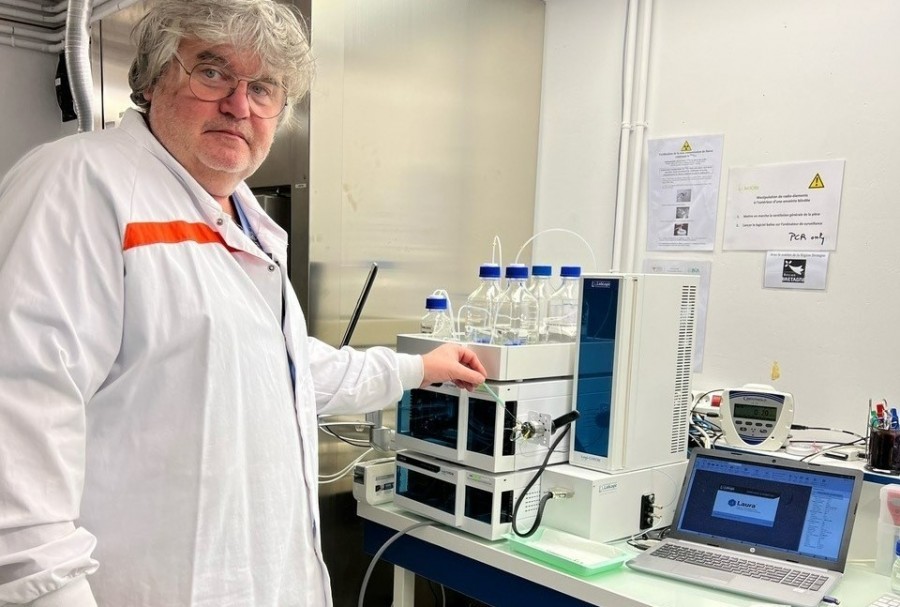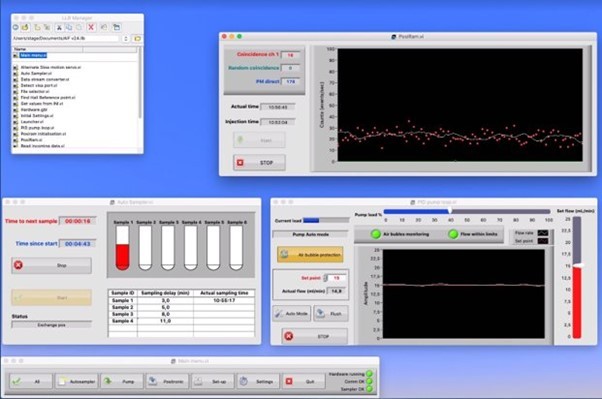Developing an alternative PET quantification research methodology using the Posi-RAM
01/02/2024

LabLogic’s radio-HPLC detector for PET metabolites is being used to monitor arterial input function in miniature pigs as a model for drug evaluation in humans
The Posi-RAM is being used to study arterial input function (AIF) at INRAE, France’s National Research Institute for Agriculture, Food, and Environment. Director of Research Professor Charles-Henri Malbert has developed an integrated autonomous system for PET quantification in miniature pigs as an alternative to non-human primates (NHP) before progressing to clinical trials.
The gold standard for PET metabolite profiling
We’ve previously spoken to Charles about his work, where he originally explained why LabLogic was chosen as a preferred supplier for his study. Now almost two years later, he has made significant progress.
Charles said, “Absolute PET quantification is essential to study drug metabolism in humans. This requires an arterial input function which measures radioactivity in arterial blood as well as the proportion of radioactivity between plasma and whole blood and, if necessary, metabolites using radio-HPLC. This is measured in an arteriovenous loop performed extemporaneously and is the gold standard.”
Such research is currently performed using NHP. As the European Commission would like to move away from using NHP for research, Charles is recreating this established methodology by using miniature pigs as an alternative model for humans.
“The Posi-RAM works even better than I had expected it to.”
In Charles’ integrated system, blood is circulated through an arterial catheter inserted in a femoral artery, passed through the Posi-RAM, and then returned through a saphenous vein. Blood flow in the external transit loop is controlled using a transit time flow meter and AI-controlled pump. Simultaneously, the radioactivity of the PET metabolites in the blood is measured using the Posi-RAM and recorded. Finally, blood is converted to plasma for radio-HPLC at known intervals for discrete sampling. The Logi-Chrom autosampler is used for the automatic injection of plasma samples into the HPLC set-up.
Charles said, “Because the Posi-RAM uses coincidence counting to filter out background radiation, it does not require heavy lead shielding which reduces the instrument’s footprint. This allows it to be positioned adjacent to the animal on the PET scanner’s imaging bed, hence moving with the animal during the motion of the scanner table. This also allows the length of the arteriovenous tubing circulating the blood from the animal to the Posi-RAM to be shorter. This is essential to maintain dispersion of the sample to a minimum.”
“The injected radiotracer is 13 MBq 68Ga, a small dosage that the Posi-RAM handles very effectively. The non-coincidence reading was about 900 cps, a factor of 10 between coincidence and non-coincidence, which is typical. The Posi-RAM works even better than I had expected it to.”

In the above screenshots, blood flow within an external loop using a transit time flow meter and pump is shown (bottom right). Simultaneously, the radioactivity within the loop is measured (top right) and stored. Finally, at known intervals, the blood is diverted to an autosampler (bottom left) for discrete sampling before further processing with a LabLogic radio-HPLC system.
Coincidence counting for maximum efficiency
The Posi-RAM has proven to be a cost-effective alternative to the only other commercially available sampler for PET arterial input function, which uses fibre optics between the scintillator and detector. This makes it less efficient because of potential losses along the length of the fibre optic. Only a few hundred light photons are produced per interaction and hence the detector needs to capture as many of these as possible to maximise the efficiency for signal sensitivity. In the case of the Posi-RAM, the scintillator is coupled to the detector in a separate housing and hence light transmission is maximised.
Charles has been able to make his integrated system autonomous by editing the instrument software to replace a three-person team carrying out intensive tasks. This allows the arterial input function to be monitored remotely, reducing radiation exposure to the researcher.
Charles said, “The results are very encouraging. The Posi-RAM is sensitive enough to calculate the amount of radioactivity in PET metabolites in blood plasma, after the injection of a total dose of 10 or 15 MBq of the radiotracer. This means it is possible to inject extremely low doses of radioactivity, which is excellent for human trials.”
Find out more
You can learn more about the Posi-RAM by clicking the button below to speak to a product specialist directly to request a guided demonstration.